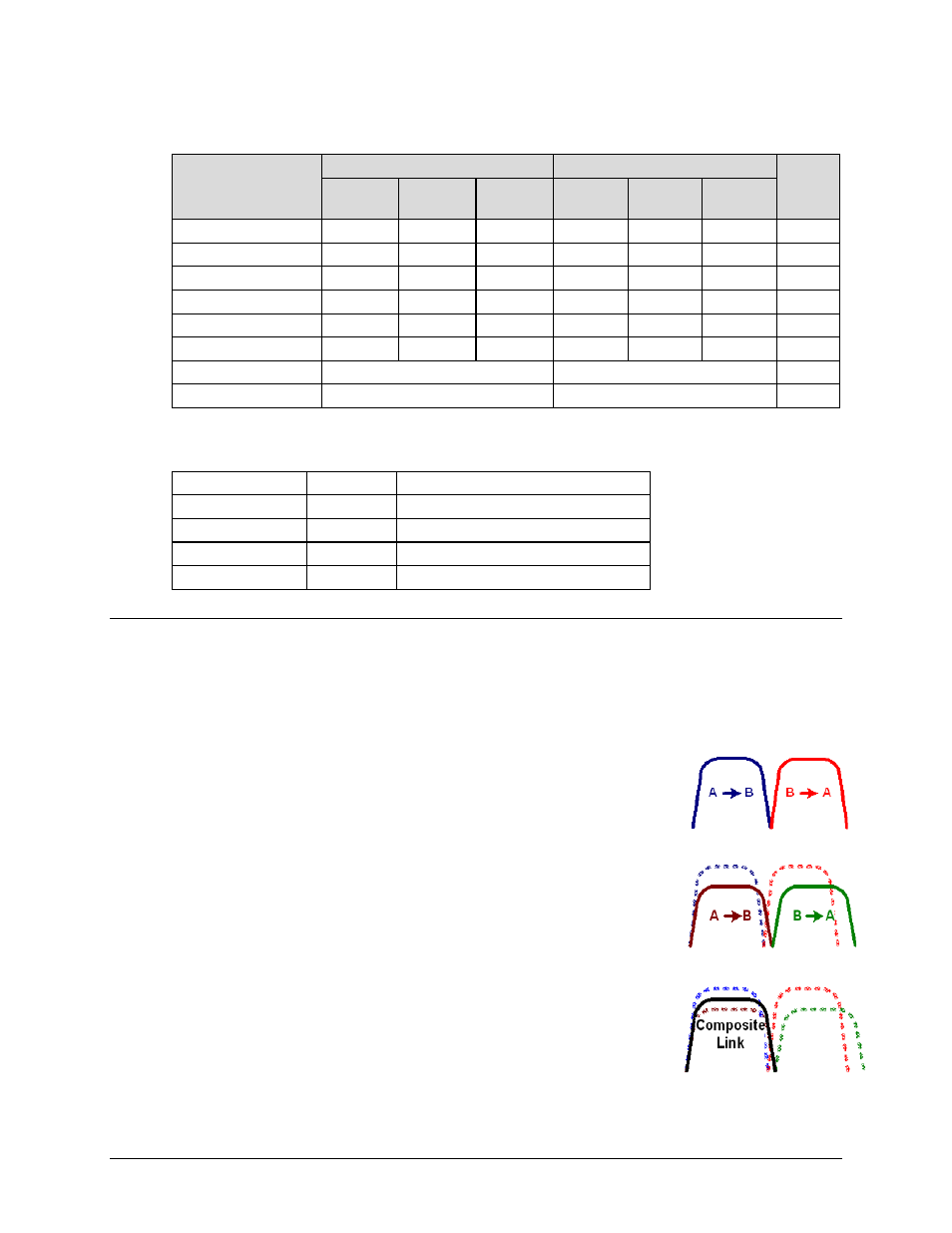F.2.5.3 power limited links – Comtech EF Data CDM-625A User Manual
Page 619

CDM-625A Advanced Satellite Modem
MN-CDM625A
Appendix F
Revision 3
F–13
The savings summary is as follows:
Item
Original Link
With Carrier-in-Carrier and LDPC
Savings
Hub to
Remote
Remote to
Hub
Total
Hub to
Remote
Remote
to Hub
Total
Data Rate (kbps)
3000
1000
3000
1000
Modulation
QPSK
QPSK
QPSK
QPSK
FEC
TPC 3/4
TPC 3/4
LDPC 3/4 LDPC 1/2
Occupied BW (MHZ)
2.8
0.9
3.7
2.8
1.4
2.8
Power Eq. BW (MHz)
3.3
0.6
3.9
2.5
0.3
2.8
Leased BW (MHz)
3.9
2.8
27.5%
Hub HPA (W)
26.0
20.3
22%
Remote HPA (W)
10.6
6.4
40%
If this link was designed using QPSK, LDPC 3/4 in both directions, it would have required:
Occupied BW
2.8 MHz
Power Eq. BW
3.0 MHz
7.2% increase in Power Eq. BW
Leased BW
3.0 MHz
7.2% increase in Leased BW
Hub HPA
20.3 W
Remote HPA
8.3 W
30% increase in Remote power
F.2.5.3 Power Limited Links
Carrier-in-Carrier can provide substantial savings even when the original link is power limited.
Spreading the carrier by using a lower modulation and/or FEC along with latest FEC such as
VersaFEC can substantially reduce the total power, which can then be traded with bandwidth
using Carrier-in-Carrier. The concept is illustrated with the following examples:
The conventional link is using 8-PSK, TPC 3/4:
Switching to VersaFEC and using a lower order modulation – e.g., QPSK,
VersaFEC 0.803 increases the total occupied bandwidth, while reducing
the total power equivalent bandwidth:
Now using DoubleTalk Carrier-in-Carrier, the second QPSK, VersaFEC
0.803 carrier can be moved over the first carrier – thereby
significantly reducing the total occupied bandwidth and total power
equivalent bandwidth when compared to the original side-by-side
8PSK, TPC 3/4 carriers:
